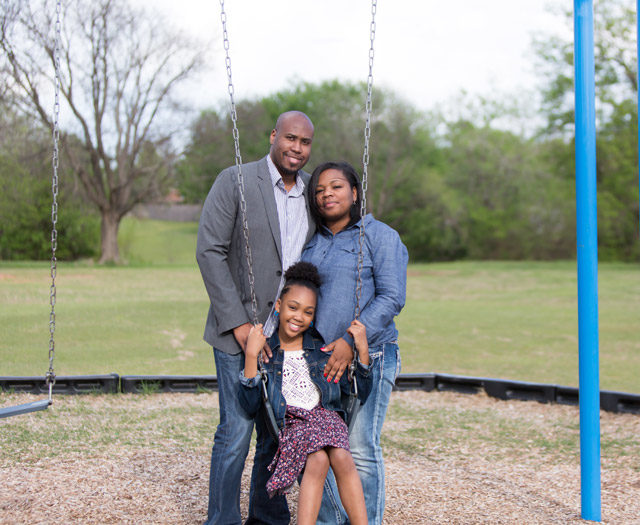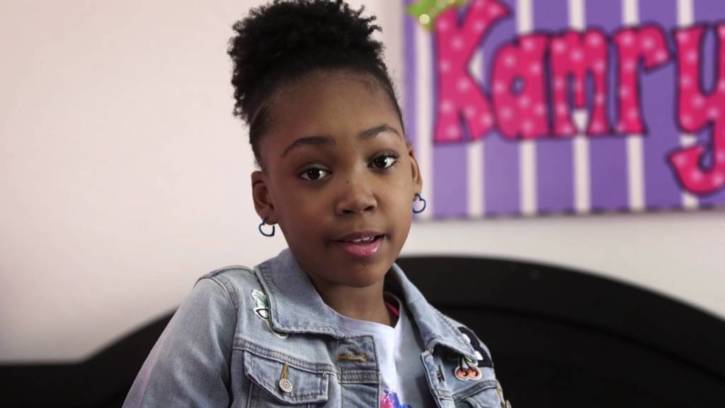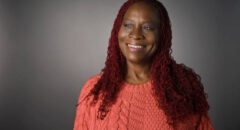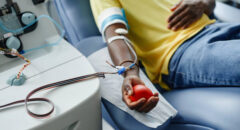
Kamryn Dukes, called Kami for short, is a warm, eloquent and motivated 11-year-old whose dream job is to become a professional singer and actress. She also wants to become a scientist.
Kami and her family lives in Oklahoma City, and she loves attending school, but her lifelong illness – sickle cell disease – has repeatedly caused her to miss half of each school year due to her symptoms.
“Kami has had well over 100 days in the hospital,” says her mother Ayeisha Dukes. “Even when not receiving inpatient treatment, she has debilitating pain almost daily, constant fatigue, and is limited greatly in regular daily activities.”
As a result, her parents now homeschool her.
“This was a difficult transition [for Kami] because she loves school and misses her friends terribly,” says Dukes. She adds that the activities of the school day often helped distract Kami from her chronic discomfort.
Kami has had a rough course since birth, Dukes explains, with her first hospital admission at only a few weeks old. Her first surgery was at 10 months old.
What is sickle cell disease?
The hallmark of sickle cell disease are pain crises, which occur because red blood cells that are normally round and disc-shaped are instead crescent or sickle-shaped due to abnormal hemoglobin. Since these cells are not flexible, they can stick to the walls of blood vessels, causing blockages that stop the flow of blood to organs or tissues, causing pain.
This inherited disease affects 100,000 people in the United States alone, predominately affecting African-Americans, Latinos and other minority groups.
Until recently, the only treatment for sickle cell disease was to treat the symptoms or prevent crises and infections. There hadn’t been a new treatment for sickle cell disease in decades. Recently, the FDA approved a new medication, called Endari, to decrease the number of pain crises and hospitalizations for those with sickle cell disease.
In addition to the usual treatment plans, there is now a chance at curing patients of sickle cell disease once and for all.
Transplantation as the answer
“We decided on a [bone] marrow transplant because it is the only cure for sickle cell disease currently,” Dukes says. “We could not accept that this was going to be her quality of life for the rest of her life.”

Duke points out that the average life span of someone with sickle cell disease is only 42 years old. In addition, with a successful bone marrow transplant, Kami would no longer carry the gene for sickle cell, thus not passing it on to her children or her grandchildren.
Kami’s parents began actively searching for a match for Kami 3.5 years ago with the help of Be The Match.
“Without Be The Match, so many people would die from their illness because most people don’t have a matching donor in their family,” Dukes says. “In our case, Kami is an only child, so this was our only opportunity.”
A sibling match has the best chance, but even with siblings, only one in four will be an actual match, explains Dr. Alexis A. Thompson, head of the Hematology Section and Director of the Comprehensive Thalassemia Program at the Ann and Robert H. Lurie Children’s Hospital of Chicago. Thompson is also the President-Elect of the American Society of Hematology.
“The majority of Americans will not have a sibling match,” Thompson says, emphasizing the need for Be The Match and the National Bone Marrow Registry.
After three years, the Dukes family learned that Kami had five potential donors through the National Bone Marrow Registry. However, they quickly learned that the matched donors were unwilling or unable to commit to actually donating to Kami.
“We went from being elated, to devastated over a period of about a few short weeks,” Dukes says. “We now have decided to go a different, less effective route, because we were desperate.”
The Dukes family decided to do a haploidentical transplant, meaning only a transplant that is only half-matched. Her father agreed to be her donor. A matched donor has 93 percent chance of effectiveness, whereas a haploidentical transplant is lower, 85 percent.
Unlike other transplants, stem cell transplant patients may require medications for only the first six to 12 months, but not long-term, says Thompson. These patients do need ongoing monitoring, but barring major complications, she says that patients can resume normal activities, sickle cell-free.
A need for more donors
Both Dukes and Thompson agree that there is a need for more donors to register.
A match is based on several genetic factors involving age, gender, as well as race and ethnicity. Given the diversity of the genetic variations among certain racial groups, particularly minority patients, more donors from those groups are needed.
“You simply have to have larger numbers of people,” Thompson says, “because the higher the diversity, the harder to find a match.”
Dukes stresses the need for not just more donors, but more committed donors.
“Besides the emotional trauma of thinking you have a donor, and later being told they decided not to, a lot of kids with blood cancers can’t wait,” Dukes explains. “They are dying while waiting for a match.”

A message of hope to others
Kami had her bone marrow transplant last month, and is successfully recovering. She is currently sickle cell-free. Both before and since the transplant, Kami has said that the difficult process is worth it.
“Daily, we daydream about the simple things that she is looking forward to being able to do without sickle cell disease slowing her down,” Dukes shares. “And as parents, we know she will have an opportunity to have a chance at a full life without consistent suffering.”
Dukes hopes Kami’s story will encourage other people with sickle cell disease.
“I’m sure they have repeatedly heard about people suddenly losing their life to the exact same thing they have, and through the fear and disappointment so far, it’s often too hard to believe that this is an actual opportunity,” says Dukes. “There is hope, please don’t ignore the opportunity to end the suffering.”
“This is a really exciting time in sickle cell disease in general,” says Thompson. “We want people to be reengaged.”
She adds that sickle cell disease is one of the American Society of Hematology’s research priorities. ASH is also working to come up with guidelines and recommendations on who should be transplanted and when.
Joining the registry is easy. To sign up as a committed registry member, visit http://join.bethematch/org/join4kami.
 Dr. Tyeese L. Gaines is a physician-journalist with nearly 15 years of print, online and broadcast experience. She is a practicing emergency medicine physician based in New Jersey and owner/media strategist for Doctor Ty Media, LLC. Follow her on twitter at @doctorty.
Dr. Tyeese L. Gaines is a physician-journalist with nearly 15 years of print, online and broadcast experience. She is a practicing emergency medicine physician based in New Jersey and owner/media strategist for Doctor Ty Media, LLC. Follow her on twitter at @doctorty.









